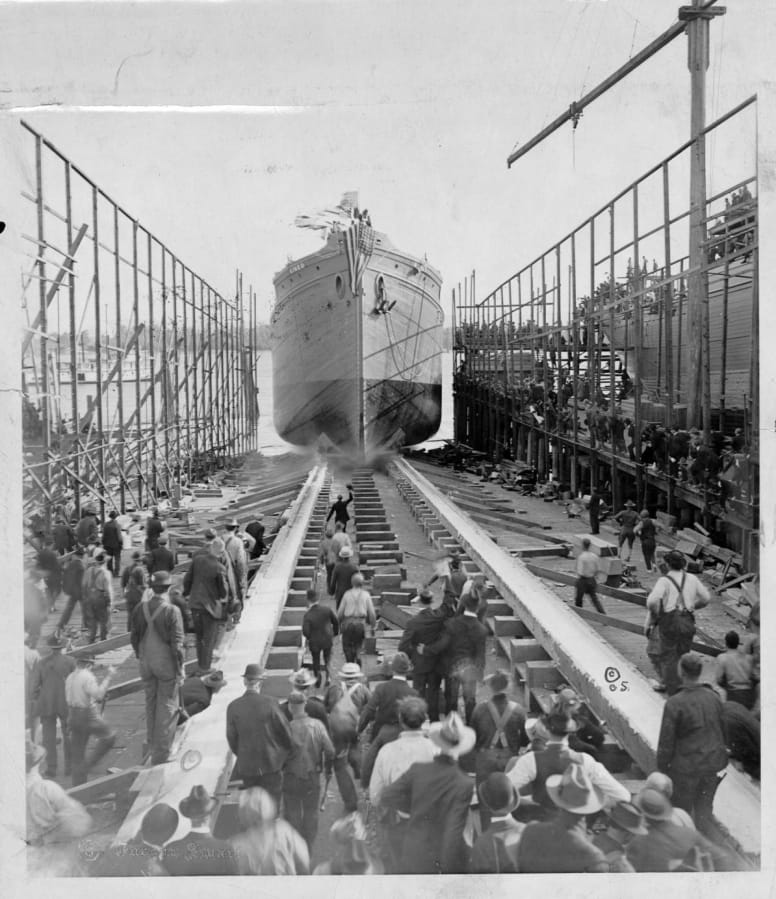Vancouver voters overwhelmingly approved creating a port district along the Columbia River in 1912. Five years later, as the United States entered World War I, pressure mounted to build more ships to make up for the merchant and military shortage. In 1918, voters approved a second bond turning 52 swampy acres east of the Spokane, Portland & Seattle Railway bridge across the Columbia near the infant Port of Vancouver for the development of a shipyard, Vancouver’s first.
The port filled in much of the swamp and leased the land to Portlander Guy M. Standifer (1886-1974), an investor in railroads and shipbuilding. A year earlier, the government awarded Standifer a contract for six wooden merchant ships. The Vancouver Weekly Columbian quoted his assertion, “On the river they are building thousands of feet of dock. … Many men are now at work, and hundreds more will be employed there within a short time. Surely there is a new day for Vancouver.”
The boast came true. At its peak, the Standifer Wooden Yard employed 450 or more workers. It would launch six merchant vessels before the federal government canceled all wooden-ship contracts in December 1918.
At about the same time, Standifer won a contract under the Emergency Fleet Corporation Act to construct 10 9,500-ton steel steamships. Just weeks before, Vancouver voters approved the $185,000 bond to purchase and prepare a site for a new Standifer yard. This massive infusion of public funds assured the nascent port’s future.



